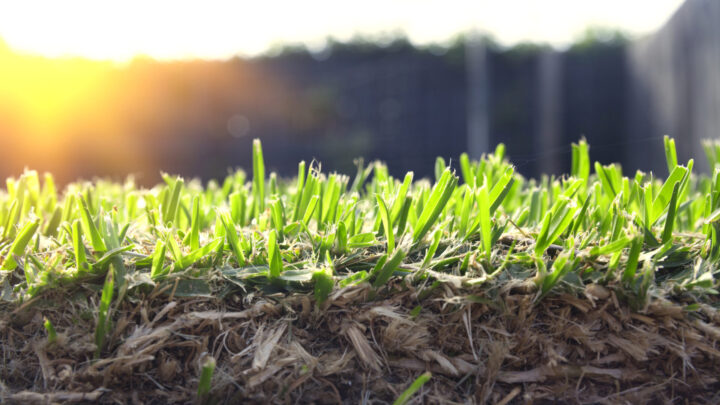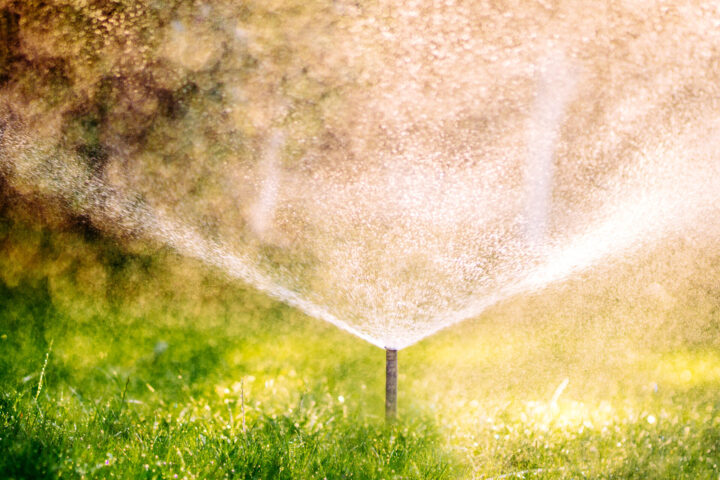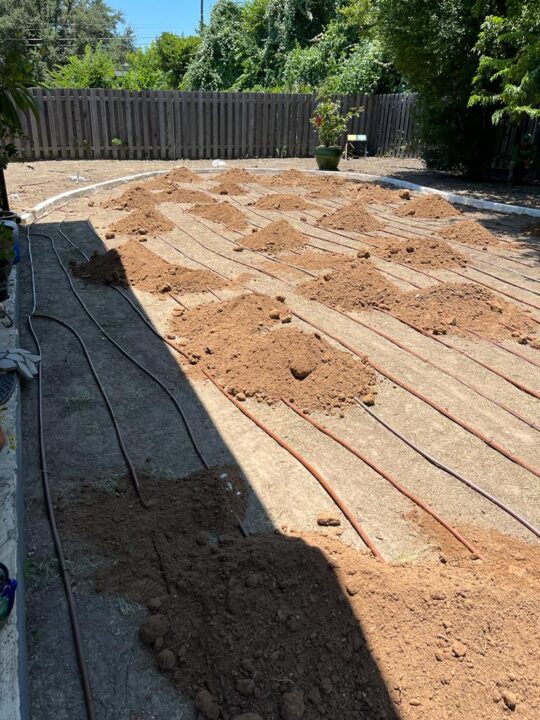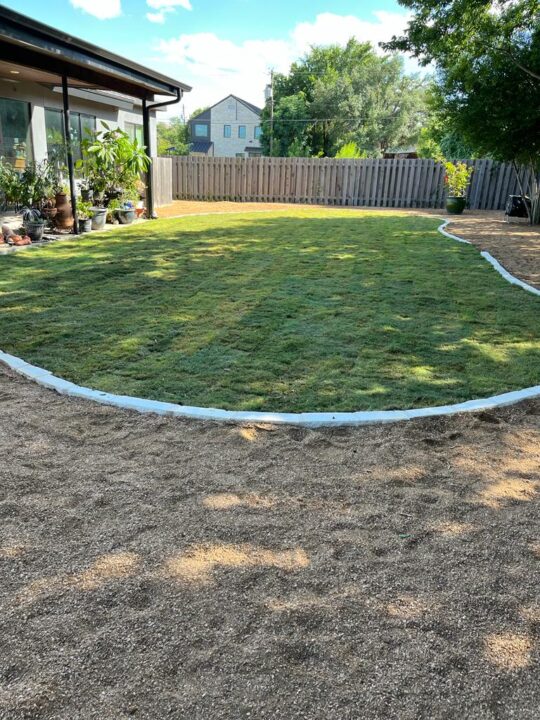Especially in July and August, the sun, heat, and dryness are brutal for our lawns. Deep watering encourages healthy root growth for plants and grass by providing water to the deeper soil layers.
Here are a few thoughts on how you can practice deep watering and get the most out of your irrigation system.
Life lessons from deep watering
Deep watering basically replicates what you find in nature. Our local ecosystem doesn’t get a little spritz of water every morning. It gets less frequent, deeper soaks with occasional rain storms.
So, why is it good for your grass and plants? Like many situations in life, too much coddling isn’t good for your yard in the long run. A little adversity actually trains resilience.
- Frequent watering: trains your grass to depend on irrigation. Periods of heat and drought can quickly fry their fragile structure.
- Periodic watering: forces your roots to grow deeper, longer roots in search of moisture. In times of trouble, they have an established root structure to keep them going.
If that’s not a relevant life lesson, I don’t know what is! (Feel free to borrow it for your next board meeting or pee-wee pep talk.)

Great, but how do you do it?
Optimal irrigation setup is a complex equation that considers multiple factors in your yard’s micro-climates — yes, you probably have more than one in your yard alone.
When deep watering, we aim to moisten the soil to a depth of 6 to 12 inches.
- Determine watering needs: Assess the specific watering requirements of your plants, taking into account factors such as plant type, weather conditions, and soil moisture levels. Different plants have varying water needs, so it’s important to understand their requirements.
- Choose the right time: It’s best to water your yard in the early morning when temperatures are cooler. This reduces water loss through evaporation and allows plants to absorb moisture more efficiently.
- Monitor soil moisture: Regularly check the moisture level of your soil. Stick your finger into the ground or use a soil moisture meter to determine if it’s time for the next watering. Adjust the frequency and duration of watering based on the weather conditions and the moisture needs of your plants.
Pro tip: Deep watering is important for trees too! As you can imagine, a surface-level spritz barely reaches the surface of their expansive root systems. You can deep water by leaving a trickling hose right at the base of your tree for a couple of hours.

Different sprinkler heads require different run times
People ask us all the time, “how long should we run our sprinklers?” but the answer isn’t one-size-fits-all. A big factor is your type of sprinkler. Different heads require totally different run times.
- Fixed Spray Heads: Fixed spray heads typically distribute water in a fixed pattern, such as a quarter, half, or full circle. These usually don’t need to run as long since they apply water more rapidly. As a general rule, a 15-minute watering session is a good starting point in the summer, but a deep watering soak will need even more time.
- Rotary Heads/Rotors: Rotary sprinkler heads, also known as rotors, rotate and spray water in a rotating pattern. These types of heads are commonly used for larger areas and can cover a larger radius. These have to run a lot longer due to their slower application rate — anywhere from 30 minutes to an hour.
- Impact Sprinklers: Impact sprinklers have that distinctive pulsating spray pattern and are most commonly attached to your hose (not an irrigation system). These also need 30-60 minutes per session, but these are notoriously hard to get things just right.
- Drip Irrigation Systems: These systems are more often found underground in beds, but they can be installed under your turf as well. They often require longer run times (well over an hour), but they’re still putting out less water than a spray system. They’re way more efficient. They get hydration right to the roots and hardly lose any water due to evaporation.


We’re here to help!
We’ve got experienced, licensed specialists available to help you set up and maintain your irrigation system. We’ll make sure your heads are positioned and every zone is optimally programmed to keep your grass healthy through the blazing Texas summer.
Check out our irrigation page for more info, or click here to schedule your system evaluation today!

